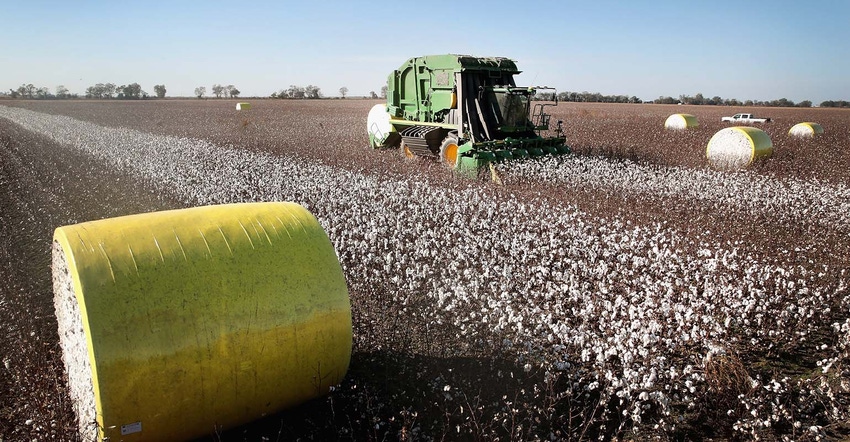
Readers of my Aug. 11 blog are likely aware that I have been long cotton. I had identified resistance of 97.65 in December cotton and subsequently bought cotton on an upside breakout.
Not long after, USDA updated their crop prospects and confirmed our worst suspicions – drought in the U.S. has extremely hampered production prospects. December cotton quickly proceeded to add 20 cents in just one week, topping out at one point at 119.59.
The market still left a couple of gaps along the way, only one of which has been filled. December cotton left what we think is a measuring gap at 108.59. A measuring gap is a potential signal that the rally is roughly halfway through its move and takes place when the open is higher than the close of the previous day with no trading in between.
Cotton production decline
The USDA cut production estimates by 3 million bales, from 15.5 million to 12.57 million bales. This is nearly 30% lower than 2021 production of 17.5 million bales. In grain production terms, this is worse than the Midwest drought of 2012.
Much of this has to do with lower acres being harvested. Cotton acres will drop by 3.2 million acres, from 10.3 to 7.1 million. Almost all this reduction came from Texas, which has historically produced about 40% of U.S. cotton. Last year Texas was responsible for 44% of U.S. production, but this year it will only account for 23%.
To add insult to injury, typically with lower yields comes lower quality. Quality demands are much higher for cotton than most other row crops. Fiber length, density, and color are all affected by lack of moisture.
This will make delivering on forward contracts very difficult as buyers either won’t accept the cotton or will only at heavy discounts. In extreme cases cotton buyers will enter into a “washout” with the farmer, allowing him to forgo delivery on the contract in exchange for the cost it takes to replace that contract.
Of course, by the time the buyer gets around to doing this, the price to replace it could be much higher than the price the farmer had originally sold it at as the market digests the lack of supply. The farmer will have to weigh the pros and cons of paying for the “washout” or delivering the cotton.
Strong export demand
With lower production typically comes lower exports. Last month USDA was projecting 14 million bales for export. This month they lowered that to 12 million bales which means the agency is projecting the U.S. to practically export its entire crop!
The other positive factor for cotton prices is that ending stocks dropped to just 1.8 million bales, a ten-year low. Australia, India, and Brazil are all major exporters that could potentially fill the void left by the U.S.
Influence of the dollar
One factor that could weigh heavily on cotton is a higher U.S. dollar. As much of the U.S. crop is exported, the U.S. dollar value has a direct impact on how competitive it is with other global exports.
The higher the U.S. dollar, the more expensive it makes our cotton. The lower the U.S. dollar, the more competitive it is. The dollar has been on a slow and steady climb so far this year, and with interest rates rising, that will likely propel its value even higher.
In the meantime, I look for December cotton to potentially fill that gap left on Aug. 12 at 108.59. Still, the long-term prospects continue to favor cotton. The cotton market will need to remain closer to 1.20/lb to compete with the price of corn. Corn will be looking to pick up more acres next season and cotton is one place it can do that.
Matthew Kruse is President of Commstock Investments. Subscribe to their report at www.commstock.com.
Futures trading involves risk. The risk of loss in trading futures and/or options is substantial and each investor and/or trader must consider whether this is a suitable investment. Past performance is not indicative of future results. Trading advice is based on information taken from trades and statistical services and other sources that CommStock Investments believes to be reliable. We do not guarantee that such information is accurate or complete and it should not be relied upon as such. Trading advice reflects our good faith judgment at a specific time and is subject to change without notice. There is no guarantee that the advice we give will result in profitable trades.
The opinions of the author are not necessarily those of Farm Futures or Farm Progress.
About the Author(s)
You May Also Like






